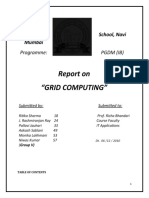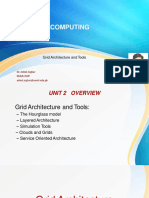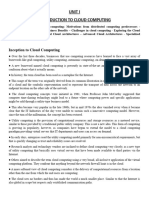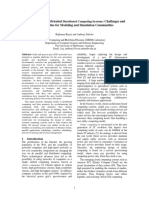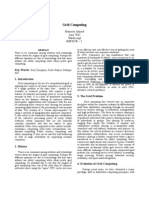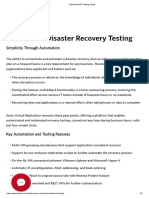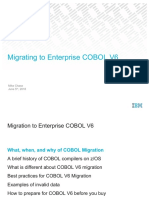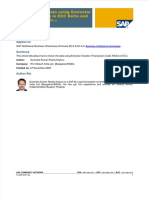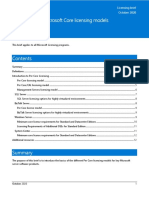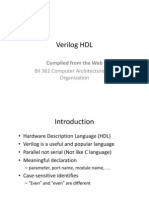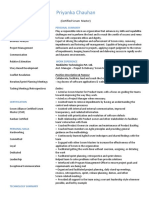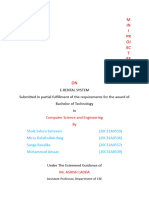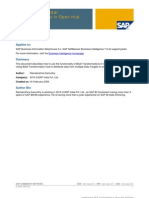0% found this document useful (0 votes)
63 views6 pagesNotes - DN - Grid and Cloud Computing
The document discusses the differences and similarities between grid computing, utility computing, and cloud computing. It provides definitions and background on each type of computing. Some key points made are:
- Grid, utility, and cloud computing all aim to harness shared resources to meet demands cost-effectively and efficiently.
- Cloud computing builds on grid computing concepts and leverages technologies like virtualization and Web 2.0 applications.
- While the architectures and business models differ, all three environments share the goal of optimally meeting demands using shared resources.
Uploaded by
Charles DarwinCopyright
© © All Rights Reserved
We take content rights seriously. If you suspect this is your content, claim it here.
Available Formats
Download as PDF, TXT or read online on Scribd
0% found this document useful (0 votes)
63 views6 pagesNotes - DN - Grid and Cloud Computing
The document discusses the differences and similarities between grid computing, utility computing, and cloud computing. It provides definitions and background on each type of computing. Some key points made are:
- Grid, utility, and cloud computing all aim to harness shared resources to meet demands cost-effectively and efficiently.
- Cloud computing builds on grid computing concepts and leverages technologies like virtualization and Web 2.0 applications.
- While the architectures and business models differ, all three environments share the goal of optimally meeting demands using shared resources.
Uploaded by
Charles DarwinCopyright
© © All Rights Reserved
We take content rights seriously. If you suspect this is your content, claim it here.
Available Formats
Download as PDF, TXT or read online on Scribd
/ 6




